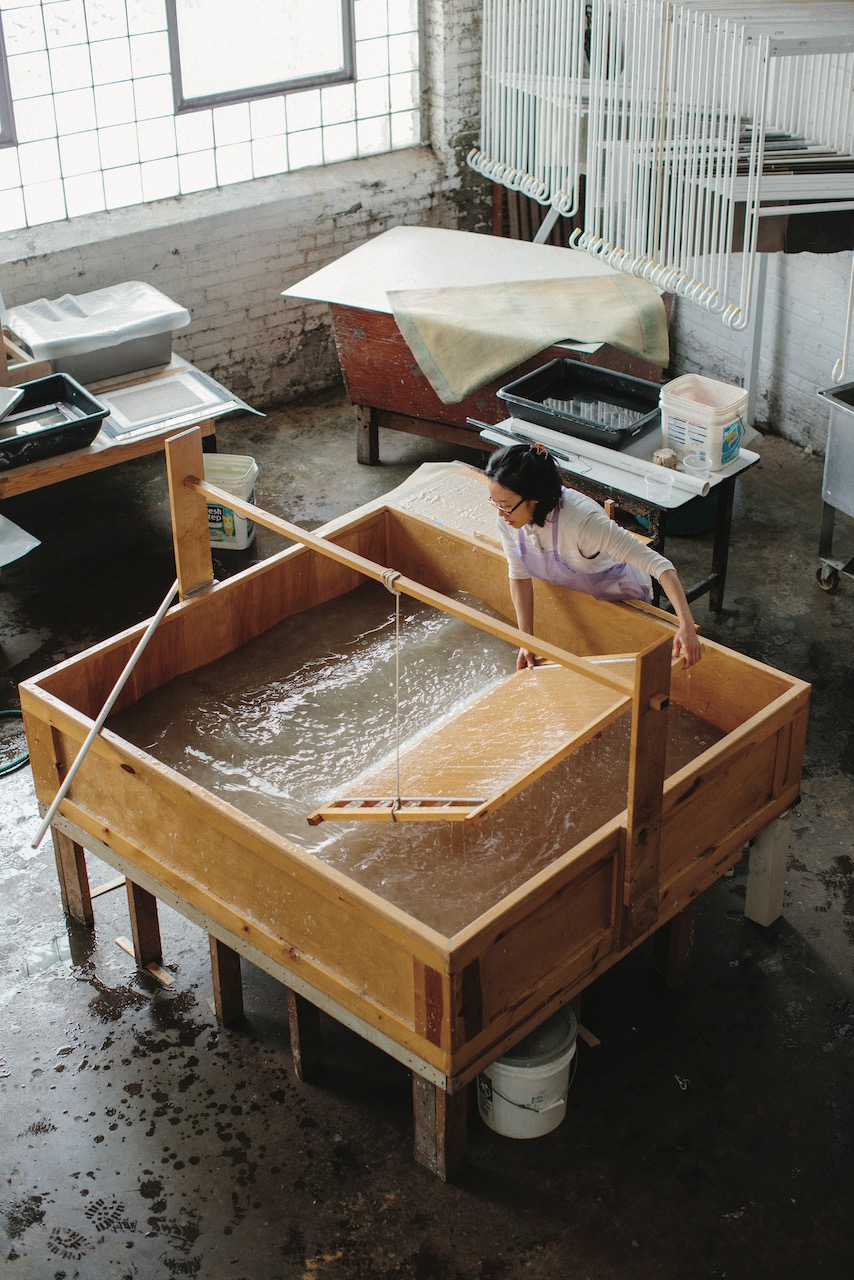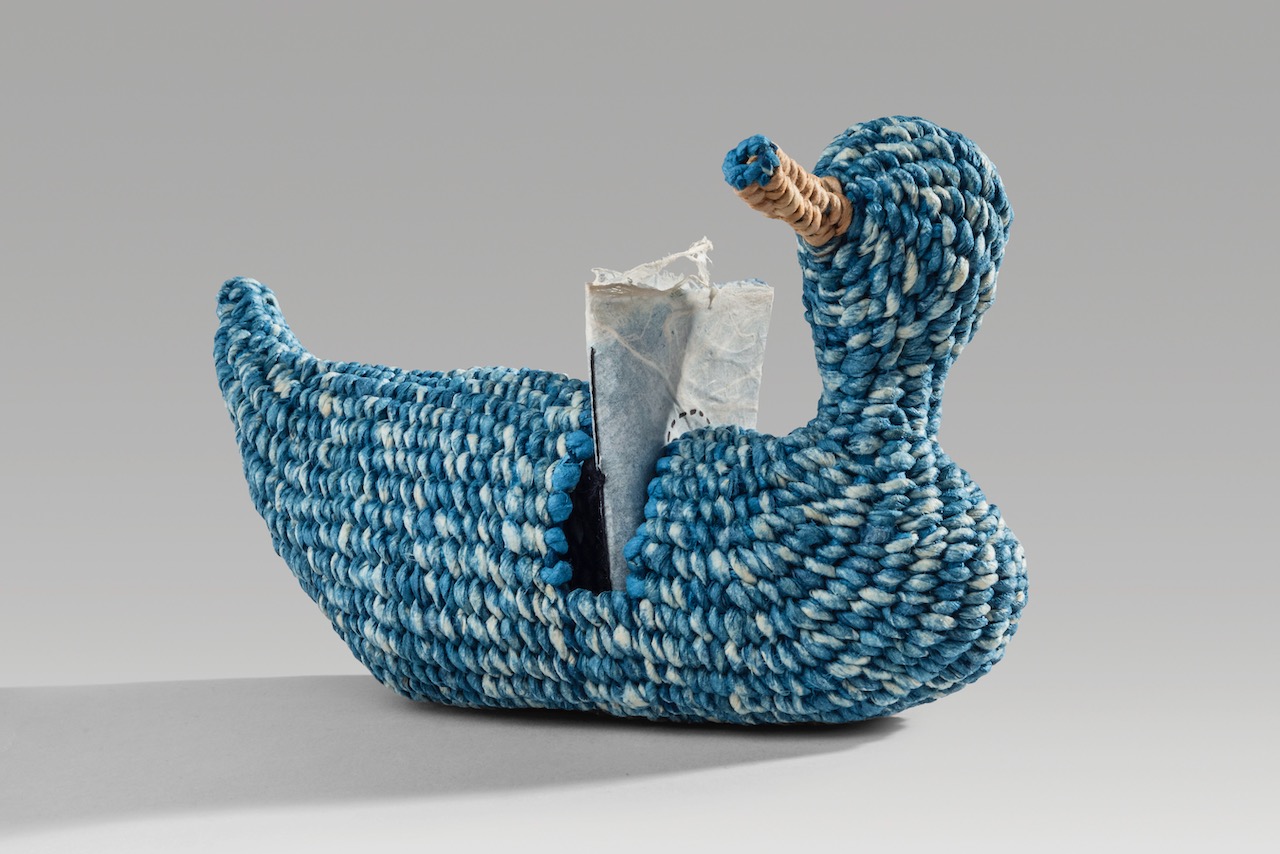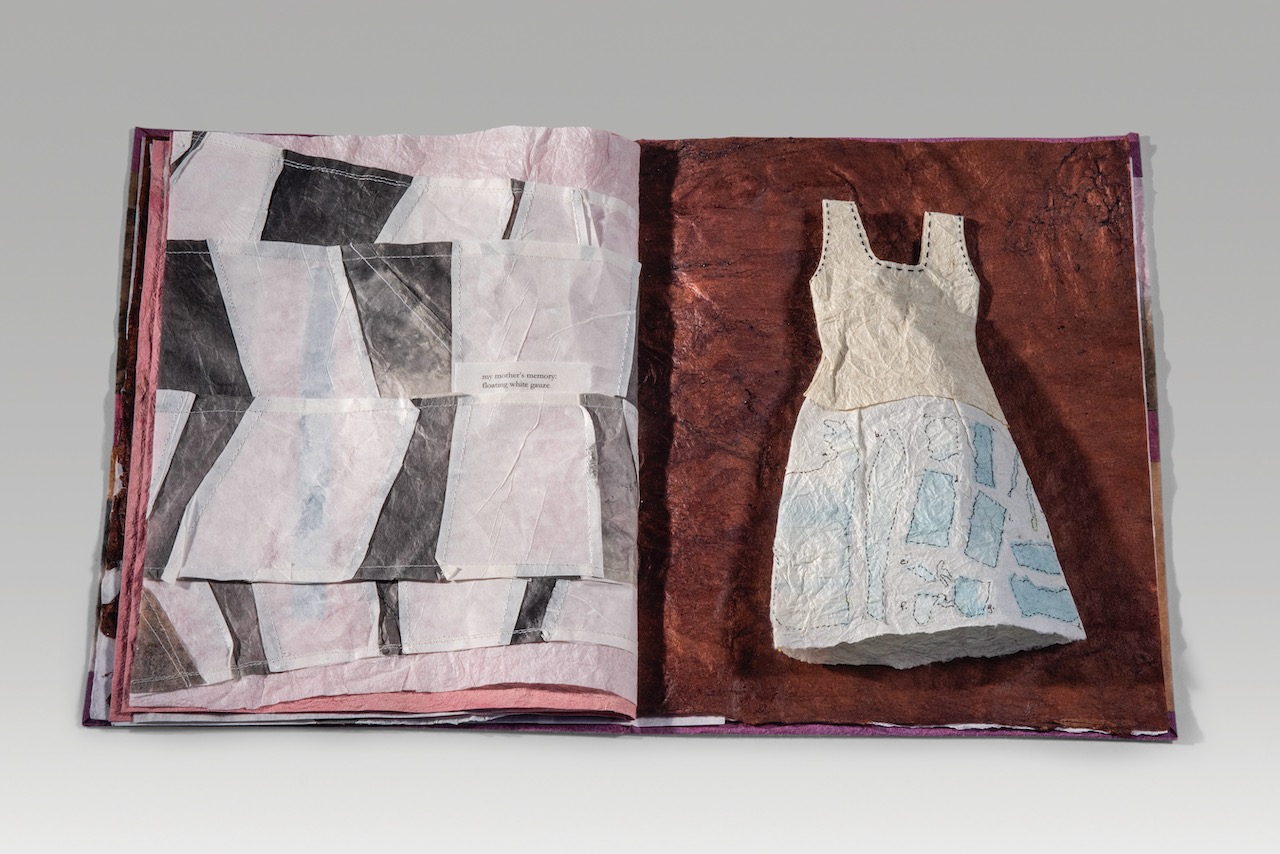- 한국어
- English
- 日本語
- 中文
- العربية
- Español
- Français
- Deutsch
- Pусский
- Tiếng Việt
- Indonesian
By Honorary Reporter Fotini Chatzoudi from Greece
Photos = Aimee Lee

Artist Aimee Lee makes Hanji (traditional paper) by hand.
Aimee Lee is an artist who specializes in Hanji (traditional handmade paper). This artist, papermaker and writer is also the leading Hanji researcher and artisan in North America.
Her Fulbright research on Hanji led to her award-winning book "Hanji Unfurled" and the opening of the first Hanji studio in the U.S. in Cleveland. Her art is displayed in collections of the Brooklyn Museum of Art, Metropolitan Museum of Art, Museum of Modern Art, Bainbridge Island Museum of Art, Stanford University, the University of California-Los Angeles and Yale University.
Lee's works have appeared in leading global media like The New York Times, KBS World Radio, PBS and CNN.
I first heard about her on a Korean Cultural Center website and conducted an email interview with her on Sept. 7.
Born in New York to Korean immigrants, Lee studied art at Oberlin College, where she began to make artists' books. This eventually led her to graduate study of book and paper arts at Columbia College, where she started to make paper and learned the history of paper making.
"There were not many English-language resources at the time about Hanji. So I went to Korea on my first Fulbright grant to learn to make Hanji, and use it in various applications such as jumchi (layered Hanji technique), jiseung (paper-weaving technique), calligraphy and natural dyeing," she said.

Aimee Lee says she enjoys each step of the Hanji-making process and producing art using the paper she makes.
On how long it takes to make Hanji and when she knows it is ready to use, Lee said, "It takes a lifetime to make Hanji, to truly understand all of the steps and elements that it takes to make traditional Korean paper. It also depends on whether you are starting from the tree or from pre-prepared fibers. If you work full time and know what you're doing or are being guided, you should set aside at least a week. If you are going to harvest fiber directly from the field, at least two weeks. Hanji was made long before humans calculated worth by how long everything takes, before capitalism took hold of the global psyche."
"Depending on the use of the paper, you can use Hanji as soon as it's dry, but it's ideal to age it so that the fibers settle. Sometimes a year is the minimum amount of time to age, but 10 years is also good."
Paper mulberry is an essential material for making Hanji. "Paper mulberry trees (broussonetia papyrifera) are not native to the U.S., but many have arrived and are either intentionally cultivated, like at the first Hanji studio I built in Cleveland, or grow wild and become invasive in warmer climates like Alabama and Florida," she said. "For students, I order Thai versions of the bark because it is more widely available and affordable."
"But to be more sustainable, I like to work with other native American plants like milkweed to make Hanji. In that way, the paper is Korean American like me."
On the reception of her studio in Cleveland, Lee said, "The feedback was very positive, and people traveled from across the U.S. and abroad to visit and learn hands-on about Hanji. Americans are glad to have a way to learn to make Hanji, because there is no easy or straightforward method for a foreigner to learn to make Hanji in Korea."

This Hanji dress by Aimee Lee is hand sewn, dyed and textured.
She said she enjoys each step of the Hanji-making process and transforming the paper she makes into art. "I will have to outsource some work as I age, but I prefer to do all of my own studio work, because I learn so much from direct contact with the plants and fibers that I turn into paper," she said.
"Hanji helps me maintain a connection to the lineage of nameless papermakers and laborers who have kept this tradition alive for almost 1,000 years. This is important because traditions that are actively practiced, even outside of their home country, have a better chance of survival than if we try to freeze the old ways in time."
Lee said she feels responsible for passing down what she learned from her teachers, adding that she remains entranced by Hanji and its possibilities.
"As we navigate this climate crisis, it seems more important than ever to participate in ways of living, working and being that do less harm. Hanji was created in natural cycles of weather, plants and people so it remains an ethical practice," she added.
enny0611@korea.kr
*This article is written by a Korea.net Honorary Reporter. Our group of Honorary Reporters are from all around the world, and they share with Korea.net their love and passion for all things Korean.